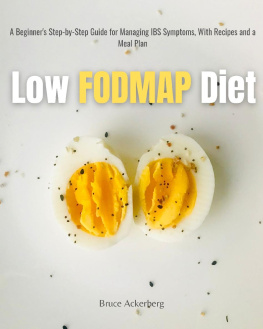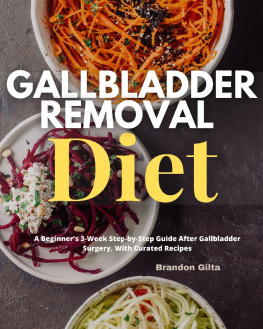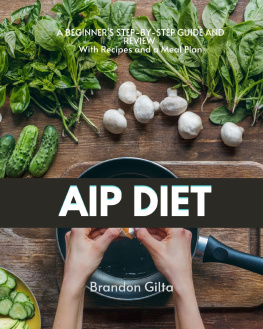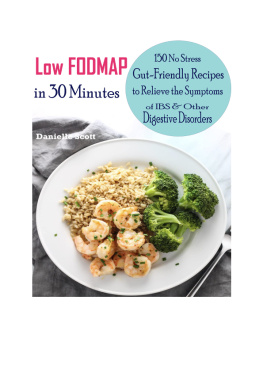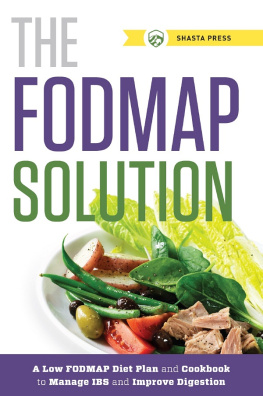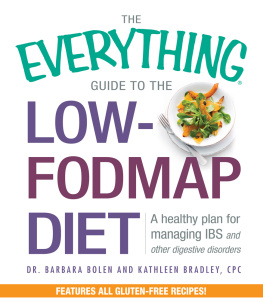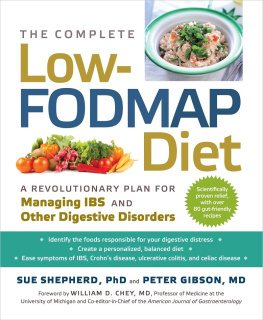Table of Contents
Low FODMAP Diet
A Beginner's Step-by-Step Guide for Managing IBS Symptoms, With Recipes and a Meal Plan
Copyright 2019 Brandon Gilta
All rights reserved. No portion of this guide may be reproduced in any form without permission from the publisher, except as permitted by U.S. copyright law.
Disclaimer
By reading this disclaimer, you are accepting the terms of the disclaimer in full. If you disagree with this disclaimer, please do not read the guide. The content in this guide is provided for informational and educational purposes only.
This guide is not intended to be a substitute for the original work of this diet plan. At most, this guide is intended to be a beginner's supplement to the original work for this diet plan and never act as a direct substitute. This guide is an overview, review, and commentary of the facts of that diet plan.
All product names, diet plans, or names used in this guide are for identification purposes only and are property of their respective owners. Use of these names does not imply endorsement. All other trademarks cited herein are property of their respective owners.
None of the information in this guide should be accepted as independent medical or other professional advice.
The information in the guides has been compiled from various sources that are deemed reliable. It has been analyzed and summarized to the best of the Author's ability, knowledge, and belief. However, the Author cannot guarantee the accuracy and thus should not be held liable for any errors.
You acknowledge and agree that the Author of this guide will not be held liable for any damages, costs, expenses, resulting from the application of the information in this guide, whether directly or indirectly. You acknowledge and agree that you assume all risk and responsibility for any action you undertake in response to the information in this guide.
You acknowledge and agree that by continuing to read this guide, you will (where applicable, appropriate, or necessary) consult a qualified medical professional on this information. The information in this guide is not intended to be any sort of medical advice and should not be used in lieu of any medical advice by a licensed and qualified medical professional.
Always seek the advice of your physician or another qualified health provider with any issues or questions you might have regarding any sort of medical condition. Do not ever disregard any qualified professional medical advice or delay seeking that advice because of anything you have read in this guide.
Introduction
This guide contains necessary information about the low-FODMAP diet that is becoming popular nowadays. This guide also suggests an effective low-FODMAP diet program that will be beneficial to people with IBS and other digestive tract disorders.
SIBO, which stands for Small Intestinal Bacterial Overgrowth is a condition that results from too much bacterial growth in the gut. This condition causes abdominal pain, diarrhea, constipation, and abdominal distention to an affected person.
SIBO is believed to be one of the main causes of IBS or Irritable Bowel Syndrome. IBS is a gastrointestinal disease that has similar symptoms to SIBO.
IBS symptoms can cause anxiety and stress to a person which leads to overeating. Binge eating and stress eating can lead to high levels of FODMAPsFermentable Oligosaccharides, Disaccharides, Monosaccharides, and Polyols. FODMAPs are sugars or short-chain carbohydrates that are not easily absorbed in the small intestine. When they reach the large intestine, they accumulate gas and attract water that causes different symptoms. They can also produce toxic gases such as methane and hydrogen that cause different IBS symptoms.
This guide also provides up-to-date information about the low-FODMAP diet and how it should be implemented. This also includes low-FODMAP recipes and a meal plan that you can use while on the diet program. Follow the suggested information present in this guide to effectively manage your IBS symptoms. Most importantly, this guide will teach you to take good care of your body by establishing effective, beneficial, and healthy eating habits. When all else fails, consult your doctor.
Thanks again for getting this guide, I hope you enjoy it!
Chapter 1 Small Intestinal Bacterial Overgrowth (SIBO) and Irritable Bowel Syndrome (IBS)
SIBO stands for Small Intestinal Bacterial Overgrowth. This is a condition that results from excessive bacterial growth in the small intestine. Normally, a healthy individual has a significantly low population of bacteria in the small intestine. When other bacteria that typically grow in other parts of the digestive tract start invading the small intestine, SIBO can happen. Small intestine bacterial overgrowth is more common in females, people 60 years old and above, and those with digestive tract disorders. Too much bacterial content in the small intestine can cause abdominal pain, diarrhea, and abdominal distention. Since the bacteria start sucking up the nutrients in the small bowel, this often leads to malnutrition.
Causes
The exact cause of small intestine bacterial overgrowth remains unknown. However, the following are believed to be the causes of this digestive tract disease:
Anatomic abnormalities in the small intestine
Acute or sudden changes in the small bowel
pH changes in the small intestine
A compromised or weakened immune system
Low levels of hydrochloric acid or stomach acid
Impaired muscular activity of the small intestine
Signs and Symptoms
Many SIBO symptoms are due to malabsorption of nutrients brought by bacterial overgrowth. These bacteria cause inflammation of the small bowel which impairs absorption and digestion processes.
The following are the signs and symptoms of Small Intestine Bacterial Overgrowth.
Abdominal pain
Queasiness
Bloating
Abdominal cramps
Constipation
Diarrhea
Indigestion
Nausea
Flatus
Increased permeability of the small intestine
Weight loss
Anemia
Risk Factors
The following are the things/conditions that can make a person at risk of SIBO:
Age (5o years old and up)
Previous surgery
Drinking alcohol and smoking
Celiac disease (gluten enteropathy)
Diverticulosis
Diabetes
Crohns disease
Hypothyroidism
HIV
Scleroderma
Fibromyalgia
Medicines narcotics, antibiotics, and Proton Pump Inhibitors (PPIs)
Diagnoses
People who have symptoms of SIBO may undergo the following diagnostic tests:
D-Xylose Test
Xylose is a kind of sugar that can be digested easily without the use of enzymes. D-Xylose test requires the patient to consume a certain amount of D-xylose sugar. After this, the doctor will measure the xylose levels in the patients blood and urine. If there are traces of D-xylose in the urine and blood of the patient, he is more likely to have problems in his digestive tract.
Breath Tests
Breath tests are used to measure the concentration of hydrogen, hydrogen sulfide, and methane in the patients breath. These harmful gases are the products of carbohydrate breakdown in the gut. Different bacteria in the small intestine initiate and perform this breakdown. The poisonous gases can go to the bloodstream and will be carried by the blood vessels to different parts of the body including the lungs. Before undergoing a breath test, the patient will be asked to do fasting for 24 hours. During the test, he will be given a glass of sugar lactulose. After consuming the drink, the patient will breathe into a balloon or a series of tubes for 2-3 hours at regular intervals. The results of breath tests will determine the location and severity of the bacterial overgrowth in the small intestine.

